October 14 – November 5, 2007
The following text describes the last of our adventures for the 2007 trip north. I actually worked on some of this section before arriving back in Vero, but had to finish it off and do the posting after we arrived at the home dock. The delay has been due to trying to get caught up with the house needs; our house is still for sale and the winter real estate season has begun, so we had to do all the things necessary to ready it for potential buyers. In this tough selling market we need to do whatever it takes to even get people to look at the house. Getting and consummating a contract will require a category 3 miracle.
We left the Washington Channel anchorage at first light on October 14 so that we could make good time heading down the Potomac. I phoned the Harbor Patrol to tell them that we had pulled up the hook. After an uneventful day on the big river, and as the sun was getting ready to set, we dropped the hook at Piney Point, MD right around the corner from a huge fuel off-loading facility. We found good holding in about 8' of water over a sandy bottom so we were happy for the night.
On October 15 we wanted to go far enough south so that we would have a short day run on October 16 to the Great Bridge free dock at Chesapeake City, VA arriving early in the day to increase our chances that we would be able to find room at the dock. The Fall Migration of cruising boats is in full swing, so space is limited in the popular stopping spots.
With that in mind we pulled into the Mill Creek basin area, right next to the Fort Monroe Army facility in Hampton Roads, VA. This anchorage sits right next to the Hampton Roads tunnel/bridge section of the Chesapeake Bay Bridge Tunnel system. There are a lot of lights with noisy traffic. We had a difficult time getting the anchor to set properly, and we would be uncomfortable there if it was really windy. It was interesting looking at the Army facility, and it appears they have their own marina.
We always enjoy the transit through Norfolk and Portsmouth: the Navy ships, commercial vessels, and waterfront facilities are right next to the ICW, so we get to see everything up real close. Today we see the huge hospital ship, Comfort. A freighter lifeboat was underway in the channel, the first time we had ever seen one detached from its mother ship's launching ramp; what an odd sight, looking like an orange egg floating on the water. Passing by the scrap yard, we see huge ships being chopped up into pieces that look small enough for me to lift.
The BIG Squeeze
There is lots of radio chatter from cruising boats trying to get an early start through the busy harbor and pass through all the bridges. By the time we arrived at the last bridge before we would enter the Great Bridge lock many boats were waiting for an opening, the most we have ever seen. 17 boats were put into the lock ahead of us. We were one of the 20 boats that got locked through during the second opening. We were lucky to have to wait only 1 ½ hours to get through. It would have been a lot longer if there had been any northbound traffic or if a commercial vessel (like a tug and barge) showed up. Ordinarily, openings alternate for north and southbound traffic. Commercial vessels have priority over recreational vessels, but if there is room left in the lock a recreational vessel could lock through with a barge.
As we exit the lock and approach the free dock, we are relieved to see that there is a space we can fit into. People on shore take our lines and help pull us in. After a quick lunch we are off to Dairy Queen, every cruiser's dream stop: yummy Blizzards! A shopping trip to Farm Fresh for groceries will get us back to Florida, we hope. Since we're docked right next to the Great Bridge we are able to watch all the boats headed south, making our stay seem to pass quickly.
When we leave on October 18 we are in a group of 4 cruising boats, 2 northbound barges, and 1 southbound barge all waiting for the Great Bridge to open. There is no room! FLUKE is first by the north side of the bridge, and Wayne is at the helm and asks the first northbound tug captain if we can get through ahead of him so we can get out of his way. Thankfully, he lets us pass, but only because we are right next to the bridge. The other cruising boats have to wait; 2 of them pull back up to the side dock to get out of the way of the barges. We can hear the bridge operator, lock attendants, and tug captains all talking on the radio about the situation being “one for the books” and “squealing” their barges as they pass each other. We are relieved to be out of that mess.
The next event for the day is to stop at Pungo Ferry and take on fuel. It is an odd marina facility, out in the middle of nowhere; the docks are in need of repair, the restaurant is closed, the marina store is poorly stocked, and signs in the parking lot indicate that a dry storage facility is in the process of trying to be permitted. However, PF pumps an enormous amount of fuel, usually at a good price, if you can say that at all about fuel these days. It takes us 1.5 hours to take on 550 gallons of diesel at $2.70/gal. and to top off our water tanks at no charge. I thought I could smell the plastic burning when we paid for the fuel, but it was really our engine starting battery shorting out.
We anchor for the night off Broad Creek, along with 3 other boats. Having company is a surprise since we are really out in the boonies, but then remember, this is the Fall Migration, so space is tight. When we stop to anchor the following night on the Pungo River there are 11 other boats. Thankfully there is a lot of room with good holding and wind protection since a big blow is in the forecast.
The Pamlico River Adventure
We originally intended to take a side trip to Edenton, NC, but the Albemarle Sound was so rough we decided to head up the Pamilico River instead. When we were in the wide open waters of the Pamilico River I could count 26 sailboats ahead of us. They were happy with all the wind as they were underway, but we sure weren't. Our stabilizers weren't working because of the low voltage on the engine starting battery which feeds the stabilizer system. Once we turned to go upriver we had a smoother ride. We wanted to stop at Bath, NC first, but since there are absolutely no services available in town we elected to cruise up to Washington, NC where we would have a better chance of purchasing a new battery.
Complimentary (free) K dock; Washington, NC October 20 - 22, 2007
We arrived midday on a Saturday, and a farmer's market was in progress right along the town's beautiful waterfront. The complimentary docks are safe, secure, clean, and well maintained with about 8' of water alongside the eastern most sets. There is no water or electric available, but we are used to supplying our own, so we didn't care about that.
Boaters have easy access to the original downtown businesses adjacent to the waterfront, now comprised mostly of boutiques and galleries, restaurants, real estate offices, antique shops,and beauty salons. The old town is picturesque, but struggling to stay alive. The waterfront area is part of a redevelopment effort designed to draw people to the old downtown area. It seems to be working as a lot of people show up every day to walk along the nicely done decoratively paved walkway, exercise their dogs, and just sit and watch the water traffic. The North Carolina Estuarium is dockside, but to my extreme disappointment, is closed the days we are there. Many people stop to look at FLUKE, and if we are outside, ask us questions about the boat and our adventures. We ask them questions about the community and what people do.
Washington, NC was the first town to be named in honor of General George Washington. Once a trading port, it fell to Federal troops during the Civil War. Despite burning and pillaging by the Federal Troops many private homes dating back to the 1800s are well maintained; taking a leisurely walk through the canopied, original main street neighborhood is well worthwhile. One of the old churches rings melodious bells on an hourly basis. Now a community of only about 10,000 people, a lot of the residents commute over to Greenville for daily work activities associated with the University or hospital. Agriculture is still a big part of the economy.
Maps for walking tours and business information pamphlets are available at the Chamber of Commerce and Visitor's Center, located close to the public docks. Energetic and motivated cruisers can walk a mile to West Marine or 2 miles to America's store, WalMart. There are grocery stores and restaurants along the way. We were able to get a battery at WM, including having the salesperson put Wayne and the 150 lb 8D battery in his truck for a ride back to FLUKE. He helped Wayne take the old battery out and took it away. Thank you for the good service to go with the $300 battery purchase! We went to WalMart for some supplies, browsed some downtown shops and ordered pizza to be delivered to FLUKE. So, we dropped $400 into the local economy during our short visit on the free dock.
On Sunday, at the green space next to the docks, a tent and table were set up and people started putting up banners. I sent Eddie over to check it out. A local church group was sponsoring a 5K walk for hunger. Eddie and I made a donation and took off with the pack of walkers. I kept pace with other walkers of a similar age, asking them questions about the community. It was a beautiful day for a walk through a lovely town, and it felt good to contribute to their community effort.
Washington Waterfront Marina rules limit the stay at the free dock to 48 hrs. Since we got in late on Saturday we really weren't ready to leave by Monday morning, so I asked the dockmaster if we could stay over until Tuesday morning. I pointed out that most of the boating activities occur on the weekend anyway and I wouldn't ask if people were waiting to get to our space. With reluctance, he broke the rules and granted us an overnight extension. Thank you for bureaucratic flexibility. For that reason and more, we hope to take FLUKE back to Washington.
Bath Creek October 23, 2007
Heading east on the Pamlico River, Bath, NC was an easy 2 hour cruise for us. We spent another hour trying to get our anchor to hold in Bath Creek after we saw the free town dock was already occupied. We tried setting the Delta and Max off the bow a couple of times each, and finally gave up and deployed the Fortress off the stern and then walked its line up to the bow. It gave us good holding. A Selene 53 came in shortly after us, had obvious difficulty setting an anchor and even ended up dragging, so after watching that boat we didn't feel like total incompetents with our anchor issue.
Historic Bath was North Carolina's first incorporated town (1705) mostly because of its easy access to the Ocracoke Inlet and Atlantic Ocean 50 miles away. Bath functioned as the first port of entry with trading in naval stores, furs, and tobacco as well as having a local gristmill to help the town's economy. Life in early Bath was tenuous at best; infighting over religion and politics, Indian Wars, yellow fever, and piracy didn't make for a peaceful community. By 1785 the county government had moved its operations to more prosperous Washington, NC, diminishing Bath's importance economically and politically.
Bath is noteworthy today as a village of historical restoration. A visitor's center offers a free orientation video tour and guided tours to several of the restored buildings. Pick up a free useful map and walking guide. You can easily tour all the sights within a couple of hours. It is nice walking along the picturesque, tree-lined 2 or 3 streets. Huge pecan trees are everywhere and had started to drop nuts; we battled the local squirrels for snacking rights!
By watching the video we learned how the pirate Edward Teach became to be known as Blackbeard. (We get a lot of questions from our land friends about the need to be cautious of pirates, so I figured I should try to learn all I can about their habits and how to identify one if one comes close. However, I really keep hoping we WILL run into Jack Sparrow!). Not wanting to be without a quick light for his handy sidearm, he kept two burning sticks under the rim of his hat which made a lot of ash and soot. Just because he was in Bath didn't mean he bathed frequently, so he accumulated a lot of grime from that “habit”. Apparently a lot of the more enterprising locals didn't really mind Blackbeard and his crew using their fair town as a base of operations; the band contributed regularly to the local economy by purchasing needed supplies and paying for ladies' “services”. Blackbeard was killed in 1718 by a British Navy expedition, giving some townspeople another reason to dislike the British.
In The Middle of Nowhere October 24 – 29, 2007
After leaving Bath, our goal was to make it to Cape Lookout, NC and then go offshore south to Charleston, SC. because the ICW from Morehead City, NC to Charleston, SC has become a cruiser's nightmare with limited anchorages, extensive shoaling, restricted bridges, and congestion. An extended windy and rainy weather system forced us into a little side cove off the South River, about 20 miles from Morehead City and the Beaufort Inlet, our exit point. South River is kind of across from Oriental, NC, on the opposite side of the BIG Neuse River.
So for 6 days we waited and waited and waited and . . .
I could look through the binoculars and see the cemetary from the abandoned town of Lukens. It looked so quiet and peaceful when the wind wasn't at a high pitched howl. I watched people go by in camouflaged boats with rifles slung over their shoulders, listened to packs of hunting hounds barking and squealing in the dense woods on shore, and the who-who from owls every evening. Eddie and Wayne worked on the alternator, putting in the old spare one to replace the one we burned up again after having had it rebuilt this summer in CT. We all caught up on other boat chores.
The Home Stretch October 30 – November 5
It appeared we had a weather window of about 36 hours beginning on October 30. Plus, we would be headed south with the wind out of the north, so we knew the seas would be behind us, making for a better ride.
So, we got up early on the 30th and traveled the 20 miles to Beaufort Inlet and headed out to sea for the 240 mile run to Charleston. Despite having 20KT winds, they were astern, so the ride wasn't bad until we were about 6 hours from Charleston, and then the winds began to shift in a slow progression. The sea shift lags behind the wind shift so we were caught in cross seas, which make waves that look like moguls on ski slopes. The ride is so miserable because no rhythm can get established, and you just get rocked around like a bean in a can. Visitor, Eddie, and I got sick. I even found a dead bird in the cockpit! We couldn't wait to get into the more protected area of Charleston harbor and finally got to anchor in Buzzard's Roost area on the Stono River south of Charleston by 2:00 pm. We were dead tired and starving since we hadn't been able to eat on the high seas.
Another windy weather system (Hurricane Noel) committed us to staying on the ICW the rest of the way through SC and all the way through GA. Shoaled areas caused the depth alarm to go off a couple of times, but we had rising tides for the real shallow passages, so we didn't touch bottom or run aground. By not stopping at the more popular docking or anchoring spots, we were able to avoid a lot of the cruising traffic.
The waterway is very picturesque through the wild areas with lots of marsh grass, many shades of waving gold in the Fall time of the year, beautiful trees, and interesting shorelines. We saw eagles, wading birds, a herd of multi-colored wild pigs, and the wild horses of Cumberland Island grazing in the marsh. At our slow speed we are able to really enjoy the scenery and serenity of the open marshlands.
By November 3 we had reached the south end of Cumberland Island, GA, where we have anchored several times before. The seas had relaxed back to a comfortable cruising height; radio chatter was abuzz with boaters talking about getting to make outside passages again. Most cruisers had elected to stay on the inside the whole way south from Charleston, so they were particularly anxious to get out of the confines of the Big Ditch, as the ICW is also known as, and do some bluewater cruising.
We felt the same way, and FLUKE is made for that kind of travel, so on November 4 before the sun even rose, we picked our way out of St. Mary's inlet to the Atlantic Ocean to head 28 hours south to Ft. Pierce Inlet, FL. It was the first time we had made that passage. Now, we have seen the entire east coast of FL, from Fernandina Beach to Key West, from the Atlantic Ocean side.
We pulled up to the home dock at noon on November 5, tired from the overnight passage, but glad to be in familiar waters and see the house again. We look forward to shore power, the unlimited use of water, and walking on land whenever we want.
And, now we can talk about where we will be going next!
Sunday, November 25, 2007
Subscribe to:
Post Comments (Atom)
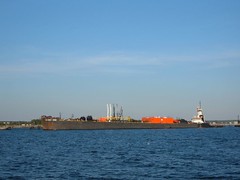

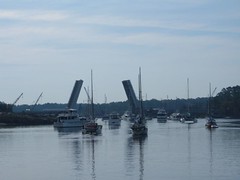

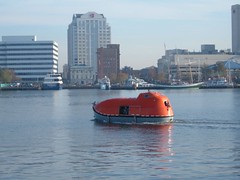
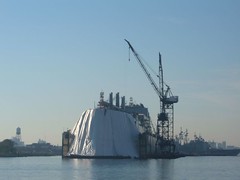
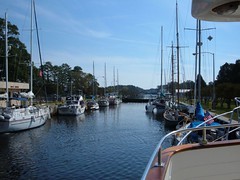
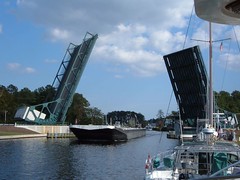
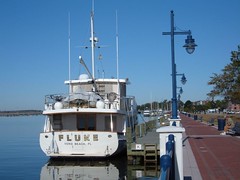

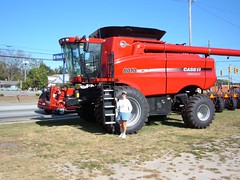
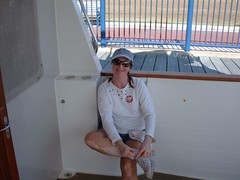
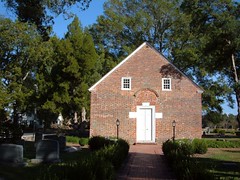
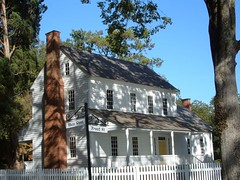
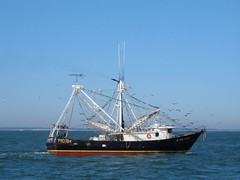








0 comments:
Post a Comment